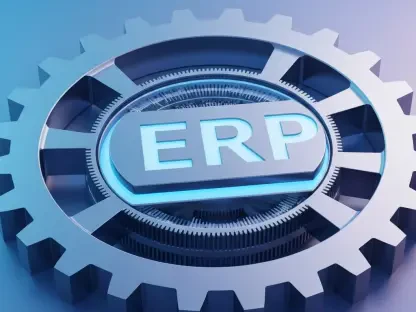Imagine a world where businesses no longer wrestle with the cumbersome divide between transactional and analytical data processing, where real-time insights fuel decisions without the drag of complex data pipelines. This vision is inching closer with Google Spanner’s recent introduction of a columnar engine, designed to unify online transaction processing (OLTP) and online analytical processing (OLAP) workloads in a single platform. This roundup dives into diverse perspectives from industry voices, cloud architects, and database specialists to explore how this update reshapes enterprise data management. The goal is to distill varied opinions, practical tips, and critical evaluations to help organizations navigate this evolving landscape of hybrid database solutions.
Unpacking the Hybrid Database Challenge
The Historical Divide and Spanner’s Bold Step
The separation of OLTP and OLAP systems has long been a thorn in the side of enterprises, forcing them to maintain distinct setups for operational transactions and deep analytics. Industry observers note that this split often leads to delayed insights due to the inefficiencies of extract, transform, load (ETL) pipelines. Google Spanner’s new columnar engine, currently in preview, aims to dismantle this barrier by integrating columnar storage alongside its traditional row-oriented structure, promising a seamless blend of both workloads.
Feedback from cloud strategy forums suggests cautious optimism about this move. Many highlight that while the concept of a unified system is appealing, the execution must preserve transactional integrity—a core strength of Spanner. Some professionals express concern over whether this dual approach might introduce unforeseen latency or complexity, especially for high-stakes environments like financial services.
A recurring theme in discussions is the potential for this update to redefine operational efficiency. Tech communities on various platforms emphasize that if Spanner can balance both worlds without compromise, it could set a new benchmark for managed database services, prompting competitors to accelerate their own hybrid offerings.
Performance Gains with Columnar Storage
Diving into the technical specifics, database engineers widely praise the performance benefits of columnar storage for analytical queries. This format minimizes input-output operations by focusing only on relevant data columns, a point frequently underscored in tech blogs analyzing Spanner’s update. Compression efficiency and faster data scanning are also cited as game-changers for handling large datasets.
Insights from system architects reveal an appreciation for the vectorized execution model embedded in this engine. By processing data in batches rather than row by row, it optimizes CPU and memory usage, a feature deemed critical for scaling analytical workloads. However, some warn that adapting existing applications to leverage these benefits may require significant retooling, especially for legacy systems not built with hybrid processing in mind.
A balanced view emerges from online roundtables where participants note that while the performance upside is clear, the learning curve and potential trade-offs—like managing data consistency across mixed workloads—could pose hurdles. This mix of enthusiasm and pragmatism shapes much of the dialogue around the columnar engine’s real-world impact.
Integration and Ecosystem Dynamics
Streamlining Analytics with BigQuery Synergy
A standout feature of Spanner’s update, according to many in the Google Cloud user base, is its enhanced integration with BigQuery through the Data Boost capability. This synergy eliminates the need for tedious ETL processes, allowing real-time analytics on live transactional data without disrupting operations. Community forums buzz with examples, such as e-commerce platforms analyzing customer behavior instantly while processing orders.
Cloud integration specialists point out that this tight coupling within Google’s ecosystem offers a streamlined experience for organizations already invested in its tools. Yet, a counterperspective from cross-platform consultants warns of the risk of vendor lock-in, suggesting that businesses should weigh the convenience against the flexibility of multi-cloud strategies.
Discussions also touch on the broader implications of such integrations. Some industry watchers argue that while the Spanner-BigQuery pairing is a powerful draw, it may not fully address the needs of enterprises with diverse, non-Google-centric infrastructures, prompting calls for more agnostic compatibility features in future updates.
Navigating the Risks of Ecosystem Dependency
The dependency on Google Cloud for end-to-end solutions sparks varied reactions across tech panels. Proponents argue that for companies already embedded in this ecosystem, the columnar engine offers unparalleled ease of use and cost savings by reducing data duplication efforts. Case studies shared in user groups often highlight smoother workflows as a direct benefit.
On the flip side, skeptics in broader cloud strategy discussions caution against over-reliance on a single provider. They stress the importance of maintaining portability, especially as data regulations tighten globally. A common tip is to design architectures with exit strategies in mind, ensuring data can be migrated if strategic priorities shift.
A nuanced take from hybrid cloud advocates suggests blending Spanner’s capabilities with third-party tools to mitigate risks. This approach, they argue, allows businesses to harness the update’s strengths while safeguarding against potential limitations of a Google-only stack, fostering a more resilient data environment.
Industry Trends and Competitive Landscape
Spanner in the Context of Hybrid Innovations
Positioning Spanner’s update within the industry’s push toward hybrid databases, many analysts draw comparisons with platforms like Snowflake, AWS Aurora, and Microsoft Azure Cosmos DB. Commentary from data management webinars often frames Spanner as a strong contender, particularly due to its managed service model and global consistency features, which remain rare in hybrid setups.
Contrasting views emerge when discussing market adoption across regions and sectors. Some industry reports suggest that while North American and European markets are quick to experiment with hybrid systems, adoption in emerging economies lags due to cost and skill barriers. This disparity fuels debates on whether unified databases truly serve as a universal solution or cater primarily to well-resourced enterprises.
A forward-looking perspective from tech trend discussions posits that as real-time analytics become indispensable over the next few years, from 2025 to 2027, Spanner’s columnar engine could inspire a wave of innovations. Yet, a minority opinion holds that dedicated OLTP or OLAP systems might still retain relevance for niche use cases, such as ultra-low-latency trading platforms.
Operational Simplification versus Specialized Needs
Simplifying enterprise data management by reducing reliance on separate systems is a key selling point echoed across reviews. Database administrators in user communities often cite the reduction of data staleness and operational overhead as transformative, especially for mid-sized firms struggling with fragmented setups.
However, a critical angle from specialized workload experts questions the one-size-fits-all narrative. They argue that industries with extreme transactional or analytical demands—think high-frequency trading or massive data warehousing—might still benefit from standalone systems. This viewpoint urges businesses to conduct thorough workload audits before adopting hybrid models like Spanner’s.
Bridging these opinions, a practical tip shared in tech meetups is to pilot hybrid solutions on non-critical workloads first. This phased approach, many agree, allows organizations to gauge compatibility and performance without risking core operations, striking a balance between innovation and stability.
Key Takeaways from Diverse Perspectives
Synthesizing the range of insights, the standout advantage of Spanner’s columnar engine lies in its ability to boost analytical performance while maintaining transactional reliability. Multiple sources commend the seamless BigQuery integration as a significant value-add for Google Cloud users, streamlining real-time decision-making processes.
Practical advice for IT leaders includes starting with a detailed evaluation of current hybrid workload needs to determine if Spanner aligns with strategic goals. Many suggest leveraging the preview phase of this feature to run controlled tests, focusing on metrics like query speed and system impact during peak usage.
Another actionable takeaway from community discussions is to explore Data Boost configurations to optimize existing setups. This step, paired with cross-functional collaboration between data engineers and business analysts, ensures that the technology serves both operational and strategic objectives effectively.
Reflecting on the Roundup’s Insights
Looking back, this exploration of Google Spanner’s columnar engine through varied industry lenses revealed a spectrum of enthusiasm, caution, and strategic advice. The consensus leaned toward recognizing its potential to unify OLTP and OLAP workloads as a pivotal advancement, though tempered by concerns over complexity and ecosystem dependency. Moving forward, businesses should consider initiating small-scale trials to validate the engine’s fit within their unique data architectures. Additionally, staying informed about evolving hybrid database trends and competitor responses will be crucial to adapt strategies dynamically, ensuring that data management remains agile in an ever-shifting technological landscape.









